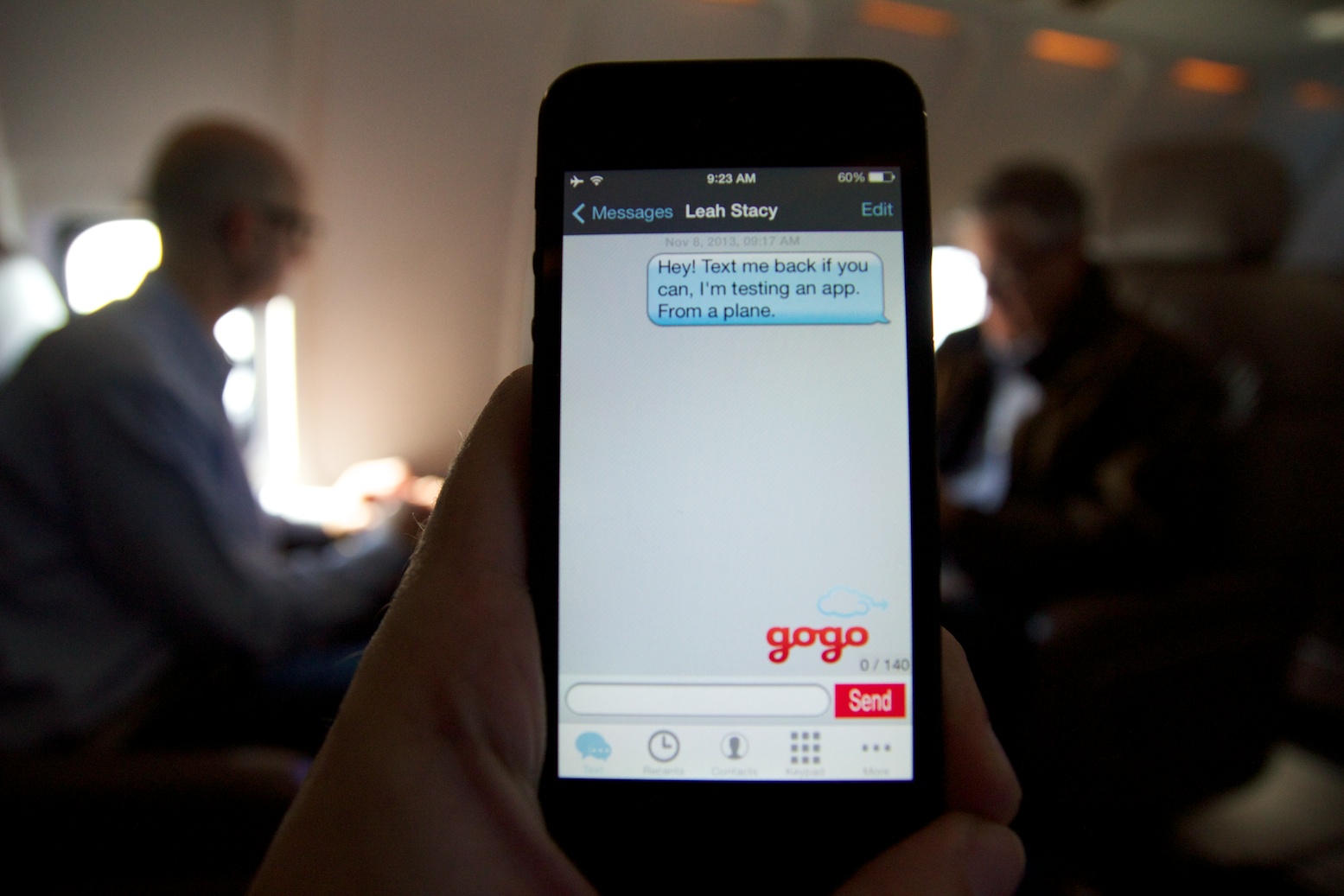Aircraft, long a respite from the constant contact allowed by smartphones, are finally getting connected. Many travelers are already celebrating the newly-relaxed Federal Aviation Administration rules, which allow passengers to use their electronic devices throughout their flights without incurring flight attendants’ wrath.
Gogo, which provides in-flight Internet connections on many major airlines, is giving tech-savvy passengers yet another reason for joy: It’s just about ready to roll out a new app that will allow passengers to exchange text messages with groundlings while they’re tens of thousands of feet in the air.
Here’s how it works: iPhone and Android users (sorry, BlackBerry owners) can install an app that, when opened, looks like a typical texting app. The app asks for permission to access the phone’s contacts list, then lets users seamlessly exchange texts with friends and family. Recipients need not know the text sender is airborne, as the texts appear as they normally would; there’s no need for recipients to also download the app, either.
The app uses airplanes’ pre-existing Wi-Fi systems, which Gogo’s Director of PR & Communications Steve Nolan said was a major selling point with air carriers. More than 2,000 commercial aircraft are already equipped with Gogo’s in-flight Internet system.
Currently in beta and dubbed “Gogo Text & Talk,” the service will likely be rebranded as Gogo Text for the voice call-phobic American air carriers. Gogo recently gave this reporter the chance to try it out aboard its “Gogo Inflight Lab,” a specially-fitted Bombardier Challenger 604 Gogo uses to test its equipment and software.
Flying out from New Jersey’s Newark Liberty Airport, the jet’s Wi-Fi system turned on at 10,000 feet — the same as it would on a commercial flight — and I opened the app. I had to reset my phone once after the app crashed, but once I was past that problem, the app worked mostly as advertised while zipping over Connecticut and New York’s Hudson Valley.
One strange problem: The texts I received would go to my iPhone’s regular inbox, not the Gogo app, and I was sure to test the app with a friend who wasn’t using iMessage. The app is still in beta, so the company has time to sort out minor issues like these. It should also be noted that services that look like SMS text messages but are more advanced — like Apple’s iMessage and competitor WhatsApp — can already be used over aircraft in-flight Internet systems.


Gogo is hoping to roll out the in-flight text services by the first quarter of 2014. Nolan said that “every airline” the company currently has a partnership with is interested in adding the service, and the company believes the demand exists on the consumer end as well. However, Gogo is still determining a business model: It may charge users for the app download, or it may ask users to buy service in-flight at a lower price than it charges for full Wi-Fi connectivity. For some, a small charge would likely be well worth maintaining ground contact while soaring the friendly skies. Others, though, might see fit to leave flights an airborne island of isolation.

